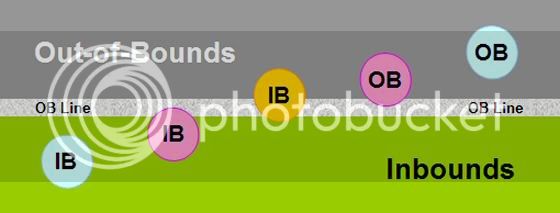ManU
* Ace Member *
How wide is the OB line? If it were as wide as a disc and a disc landed only on it, even though that disc is only on the OB line, it's OB because the OB line is OB.
If the OB line were 1 inch wide, and a disc landed on the line and the OB area past it, it's OB.
Now, shave only a fraction of an inch from the IB side of the OB line and that same disc would be IB.
The width of the line must be standard to avoid this.
My original question is this. If a disc flys, skips, rolls or otherwise legally travels OB and then back IB, without stopping until it comes to rest IB, is it IB? I think so because of "comes to rest."
And, in casual play, with no marked IB or OB, what do y'all usually call the bounds? We've been playing street, sidewalk, fence and out of the whole damn park or course (whichever applies) as bounds. Once a disc is resting all the way in, over or out of any, it's OB. We haven't landed in water yet and play any rough as IB. We like play where it lay.
If you can't get behind your disc because of said rough, and it isn't a permissible movable object, we give about an arms length into standable IB territory. Do the rules say we should give 1 meter or 5 meters here?
line width
it is not the width of the line that is the issue it is where the disc lands
in your first example instead of shaving something off the line to make the disc in consider that the disc lands a hair more over the line
it is in
the line could be 12 feet wide but part of the disc needs to be in bounds
OB to IB
you can play over OB but you must come to rest IB
relief
you get 1 meter
